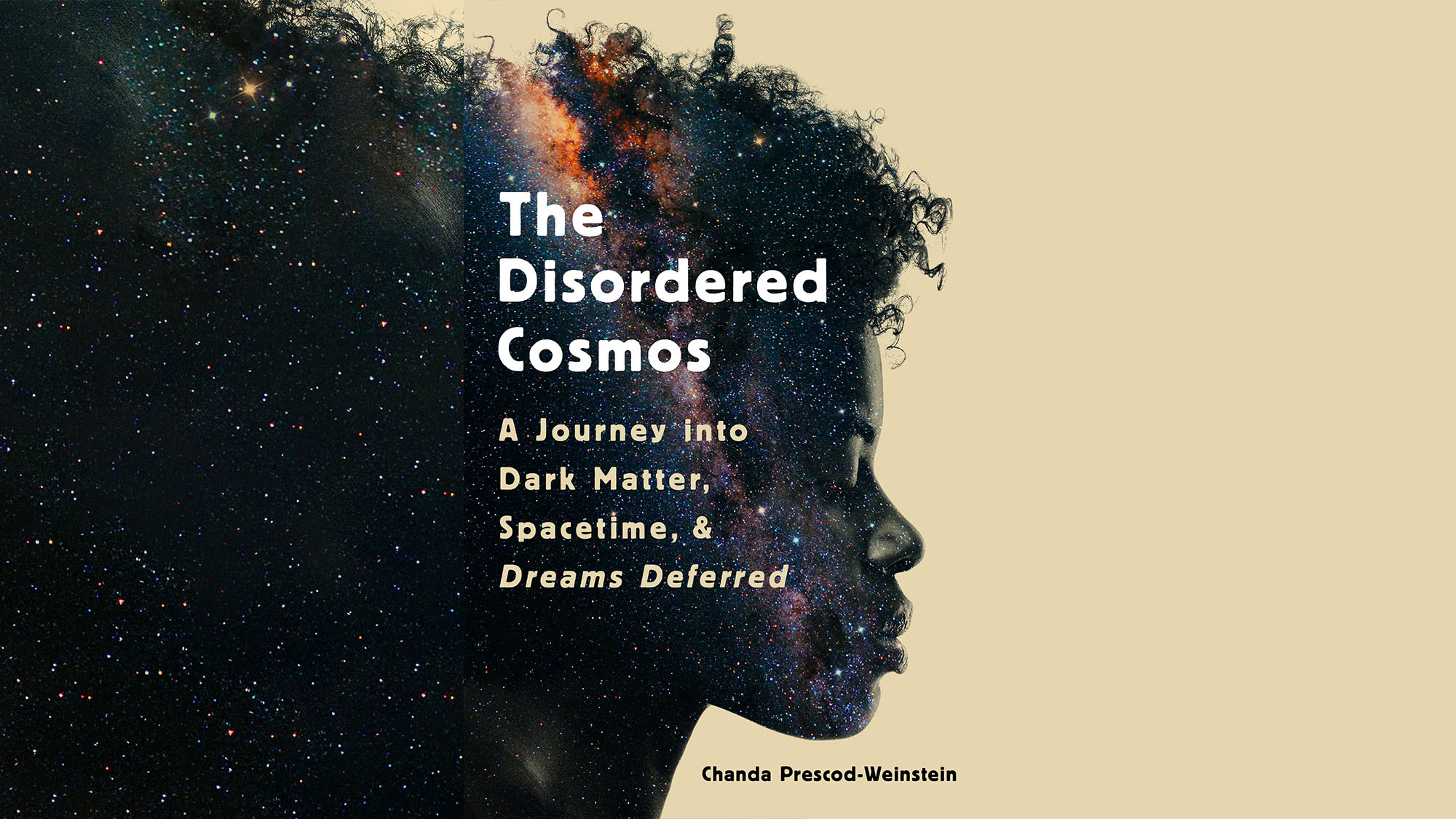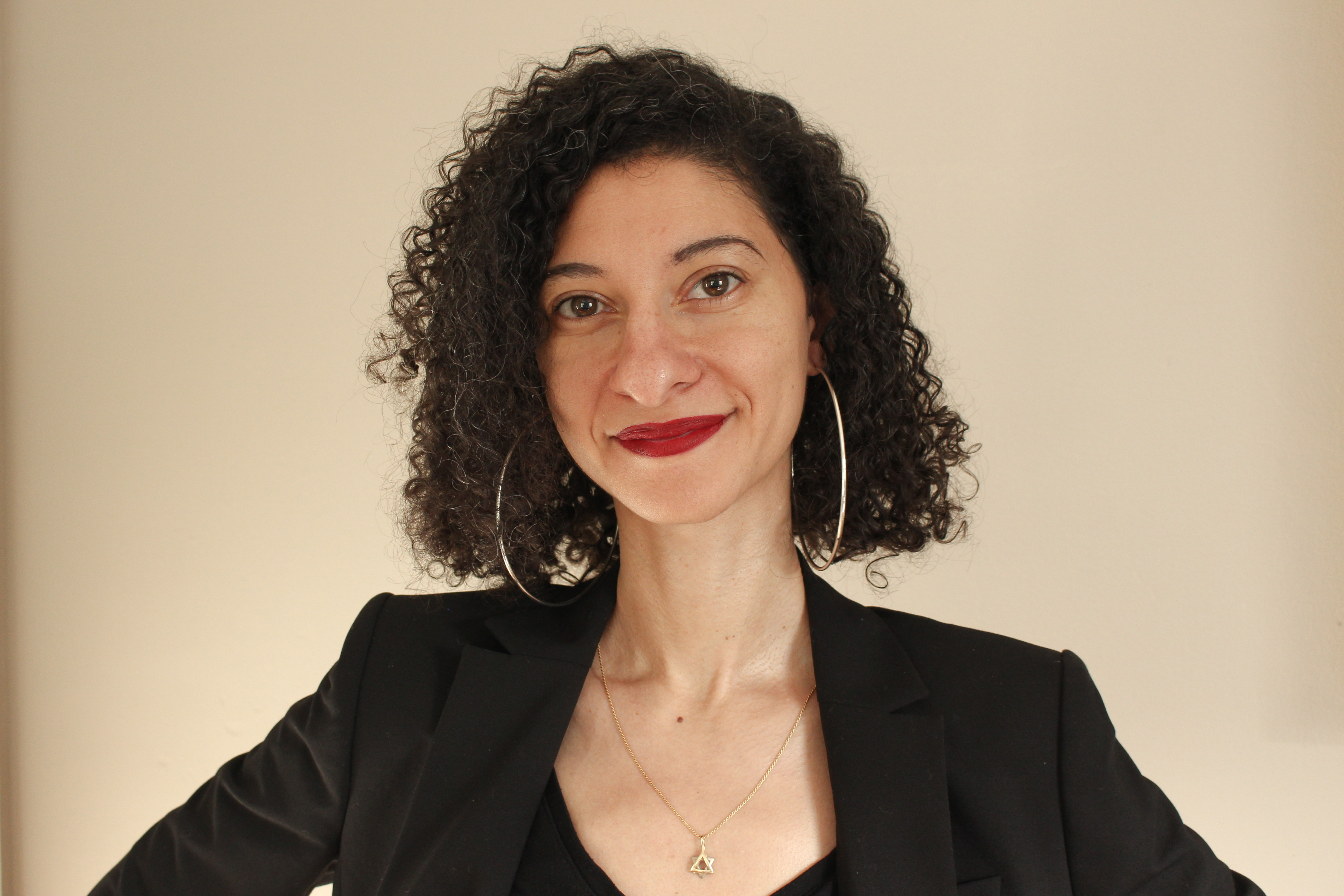Book excerpt: 'The Disordered Cosmos'
What does it mean to be a theoretical physicist?

In theoretical physics, as in all human endeavors, identity matters.
And physics can be a hostile place to those who don't match the traditional template of a physicist. That reality is inseparable from the field itself, theoretical physicist Chanda Prescod-Weinstein argues in her new book, "The Disordered Cosmos: A Journey into Dark Matter, Spacetime, and Dreams Deferred" (Bold Type Books, 2021).
The book touches on everything from the smallest of particles to the largest of oppressive systems in a sweeping exploration of the complex nature of astrophysics.
(Read an interview with Chanda Prescod-Weinstein about the book.)
Related: Best space and sci-fi books for 2021
The Disordered Cosmos: A Journey into Dark Matter, Spacetime, and Dreams Deferred
Bold Type Books, 2021 | $24.99 on Amazon
From a star theoretical physicist, a journey into the world of particle physics and the cosmos -- and a call for a more just practice of science.
Chapter 4: The biggest picture there is
When people ask me what I do, I say that I'm a particle cosmologist. I tell them, "I use math to figure out the history of spacetime." It's my job to fill in the details about important events on the cosmological timeline — in other words, to tell a cosmological story using math. I have work to do because we still don't have a good sense of how the story begins, although as I described in "In the Beginning," we have filled in a lot of the timeline between then and now. What I love about this work is that this is the biggest picture there is: spacetime and its (dis)contents. It also feels like being the keeper of a deeply human impulse. To borrow a word from the Indigenous communities that my Black ancestors probably come from, I am a griot of the universe — a storyteller. And although I am the first Black woman to hold a tenure-track faculty position in theoretical cosmology, I am certainly not the first Black woman to be a griot of the universe.

Indeed, every community, including those of my African ancestors, has a cosmology. My way of studying the universe — through the analytic frameworks that I have mostly inherited from the Euro-American imperialists and settlers who kidnapped my ancestors from Africa and enslaved them — is not the only one. It is not the cosmology of my maternal ancestors. It's not quite the cosmology of my paternal ancestors either. Although my father is white in most global contexts, he is also an Ashkenazi Jew of Eastern European heritage — the kind of people who come from the shtetl, the village, not urban Western Europe like Einstein. Their cosmology is the Biblical Genesis, not the general relativity that I grew up to become an expert in. Cosmology is a deeply human impulse — we have always wanted to have a sense of where we came from and why we are here. It happens to be that because of where I grew up and my own personal tastes, I study one particular perspective on this, and here I hope to sketch out this picture for you in a way that will help you feel some of my enthusiasm for it.
Breaking space news, the latest updates on rocket launches, skywatching events and more!
The way professionalized physicists understand the cosmic timeline is something like this: in the beginning, there may have been no beginning. The spacetime that humanity calls its universe may in fact be one bubble of an infinite number of bubbles, all of which may be inaccessible to us except for the one we're in. It's not clear how we will prove, with physical or observational evidence, that this is true or not true. But currently, a large swath of my professional community leans toward believing that this is true. Perhaps there was no real big bang. So, in the beginning, we are maybe just talking about our single bubble, and before that bubble was a second old and certainly before there were any Standard Model particles wandering around, it likely underwent a rapid expansion where spacetime grew faster than the speed of light — because as we currently understand things, spacetime is the only phenomenon in the universe that can break the universal speed limit. This time period is called inflation, and it was first proposed by one of my research mentors at MIT, the wonderful Alan Guth. There's much we don't understand about inflation, including what exactly set it off. It didn't last very long — less than tenths of a fraction of a second — and when it was over, the universe continued to expand, albeit much more slowly.
Inflation is a vaguely contested idea. I say vaguely because there is a small but incredibly vocal minority of people who can quite reasonably be classed as "inflation haters." In the last five years especially, there has been an uptick in the number of editorials appearing in the pages of respected publications like Scientific American and Nature that challenge the centrality of inflation to our standard cosmology, even going so far as to say it's not real science because it's not testable. Essentially, this argument hinges on the fact that while we have generally worked out what inflation does and how it does it, we still don't know any details about the particle that would cause inflation to happen, and it is easy to write down different models of inflation that all essentially accomplish the same thing. Accusations sometimes fly around in the science press and the blogosphere about how inflation is completely untestable. I always shrug a little about these kinds of objections because while inflationary theory does face real challenges, it's also the case that it's hard to explain observational data without it. It's our best possible model and that fact alone means it merits continued excavation and theoretical experimentation. As my other MIT adviser — theoretical physicist and historian David Kaiser — would probably say, the evidence for inflation also continues to be strong. But before I can explain what evidence we have, I need to get further ahead in the timeline.
Every physicist and astronomer, no matter their field, knows the basics of inflation, which is that spacetime rapidly expanded. What isn't widely discussed is what happens after the end of the inflationary era — less than a tiny fraction of a second after our spacetime first came into being. Currently it seems likely that the inflaton, the particle field that drives inflation, transferred the remains of its energy to other particles, and those particles multiplied in number. We also know that inflation should have significantly cooled down the universe. We know, too, this time from actual experimental and observational data, that in order for the rest of structure formation — galaxies, stars, us — to occur, the universe needed to reheat. But we don't know how. This question has been one of two dominant drivers behind my research in the last few years: How do you reheat a phenomenal cosmic banquet after inflation has flash-frozen it — without going too far? This is a question of general interest to cosmologists, as well as people working on technical issues in quantum field theory in curved spacetimes (particle physics at the interface with gravity). I happen to fall into both categories, so this is fun for me.
This article has been adapted from The Disordered Cosmos: A Journey into Dark Matter, Spacetime, and Dreams Deferred by Chanda Prescod-Weinstein. Copyright © 2021. Available from Bold Type Books, an imprint of Perseus Books, LLC, a subsidiary of Hachette Book Group, Inc.
You can buy "The Disordered Cosmos" on Amazon or Bookshop.org.
Follow us on Twitter @Spacedotcom and on Facebook.
Join our Space Forums to keep talking space on the latest missions, night sky and more! And if you have a news tip, correction or comment, let us know at: community@space.com.

